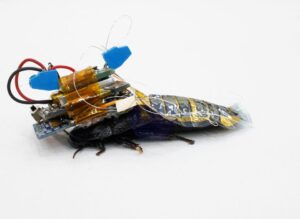Humans detect smells by inhaling air that contains odor molecules, which then bind to receptors inside the nose, relaying messages to the brain, whereas, AI interprets the signatures and classifies them based on a database of previously collected smells.
Unlike the human eye, which has only three sensory receptors for sensing the photons of red, green, and blue color, the human nose has over 300 receptors, making it more difficult to predict smell than color.
A 2014 study showed that humans can distinguish at least 1 trillion different odors. But you may wonder how an artificial intelligence will be able to handle the impossible. These are just initial steps in AI systems, which are being converted more into human-like social individuals all over the world in different areas.
In the recent times, Google has built an AI model with a human-like capacity to predict odors. Scientists have successfully formulated a “Principal Odor Map” (POM) with the properties of a sensory map. The map developed by the team of Google AI links molecular structure to the aroma of substances and can even predict smells that are still unnoticeable by humans.
The Google researchers began the research in 2019 using a deep learning algorithm. The type of smell interacted with the molecular structure. Various samples of specific molecules were trained to be identified by a graph neural network (GNN) model along with the smell labels they evoke, such as beefy, floral, or minty.
Researchers looked into whether the GNN model could learn to predict the odors of new chemicals that people had never smelled before and that were different from the molecules used to train it. The researchers referred to the study as an “important test” in their Google post. Many models work well with data that resembles data they have previously seen, but often fail when tested with new data.
The Google model was successful and demonstrated exceptional intelligence in predicting smell from molecule structure.
The model was also tested to see whether it could predict how animals would perceive odors. They found that the map was capable of precisely predicting the activity of sensory receptors, neurons, and behavior in most of the animals that olfactory neuroscientists have studied, including mice and insects.
AI detecting odors can be used for a variety of tasks, including identifying scents in the environment to aid people who have lost their sense of smell; and creating new artificial scents.
The research team at Google found that the common application of the sense of smell may be to detect and distinguish between various metabolic states, such as knowing when something is ripe vs rotten, nutritious vs inert, or healthy vs sick.
They had gathered data about metabolic reactions in dozens of species across the kingdoms of life and found that the map corresponded closely to metabolism itself.
The scientists retrained the model to tackle the issue of the spread of diseases transmitted by mosquitoes and ticks while killing hundreds of thousands of people each year.
The team improved the original model with two new sources of data. The first set was a long-forgotten set of experiments conducted by the USDA on human volunteers beginning 80 years ago and recently made discoverable by Google Books. Secondly, a new dataset was collected by their partners at TOPIQ, using their high-throughput laboratory mosquito assay.
Today we introduce an ML-generated sensory map that relates thousands of molecules and their perceived odors, enabling the prediction of odors from unseen molecules and providing a potential tool to address global health issues like insect-borne disease. https://t.co/wmiq6wPKv5
— Google AI (@GoogleAI) September 6, 2022
With the help of the POM, researchers hope to predict animal olfaction to better respond to the deadly diseases transmitted by mosquitoes and ticks. Both datasets measure how well a given molecule keeps the mosquitos away. Together, the resulting model can predict the mosquito repellence of nearly any molecule, enabling a virtual screen over huge swaths of molecular space.
“Less expensive, longer lasting, and safer repellents can reduce the worldwide incidence of diseases like malaria, potentially saving countless lives,” said the researchers.
According to their findings, a Principal Odor Map might be produced using the researchers’ method of smell prediction in order to tackle odor-related issues more widely. The key to measuring smell was in the map. It provided answers to a variety of questions regarding new odors and the molecules responsible for them. The model also linked the evolution of odors to the natural world.
To sum up, AI algorithms do have a potential to effectively predict smell. The Google model was one of the first to demonstrate this.
- Researchers use AI to make Belgian beer taste better - March 27, 2024
- Researchers introduce RAmBLA as a holistic approach to evaluating biomedical language models - March 26, 2024
- Smart tattoos that monitor health metrics and vital signs - March 25, 2024



